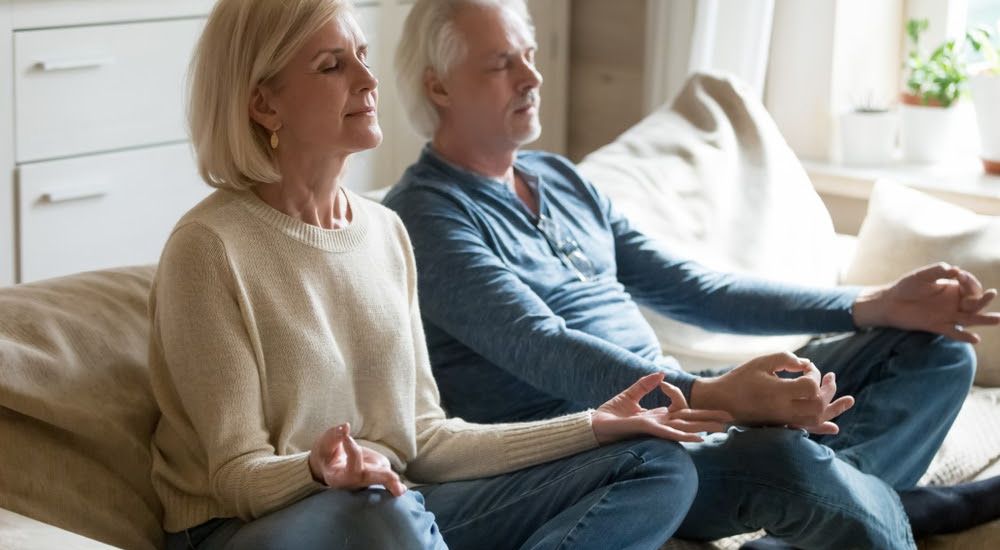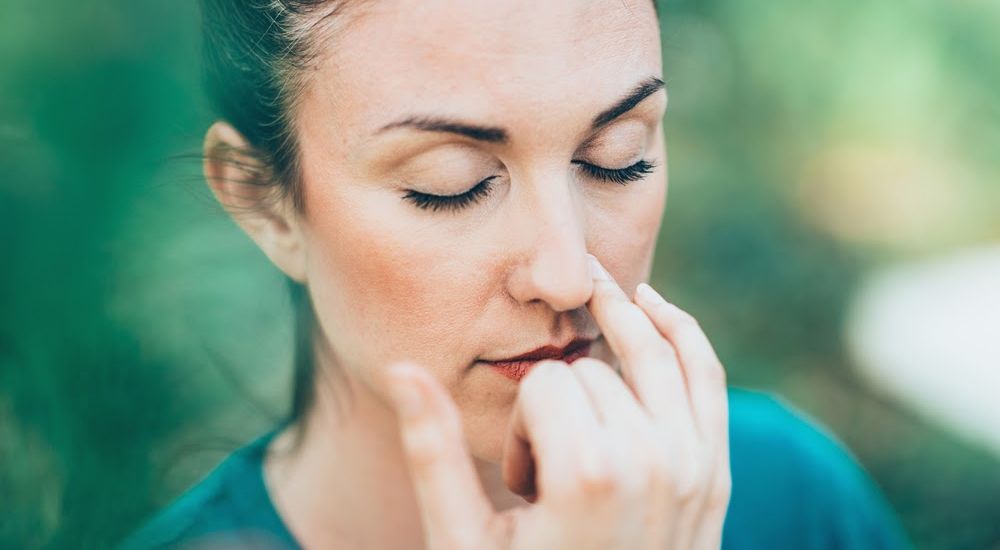Oxygen is life. I’m sure you’ve heard that, or something like that before. But did you realize that placing your attention on improving the depth and quality of your breath for just a few minutes a day, can improve the quality of your life? Our breath is the conveyance through which we deliver vitality, wellness, and energy to every individual cell throughout our entire body. If you are stressed or have anxiety, chances are your breathing is often stifled and shallow. Taking short quick breaths is like sending a signal to your brain that something is wrong. In fact, research has shown that a state of anxiety can be induced in a person without any exterior reason, just by instructing them to take a series of short, quick breaths. The good news is that we can take our breath off auto-pilot anytime we wish, and induce a state of calm by taking long, deep breaths. Let’s take a quick look at the science behind taking our breath off auto-pilot when we are stressed, and developing a practice for becoming the master of what sort of messages our brains report to our bodies during times of stress and anxiety.
So what is the science behind the effectiveness of breathing exercises for relief from stress and anxiety?
We hold our breath when we are afraid. We hold our breath when we are in danger. We gasp for air when we are shocked, or startled. We take short, sharp inhales when we are frustrated or angry. These breathing cues inform our brains about what sort of chemicals to release into our systems. The breath is literally the informant that lets the brain know what sort of message to report to the body. When our breathing cycle is left on auto-pilot, it will reflect our perceptions of the world around us. If we are cruising down the road with the windows rolled down, a smile on our face, singing our favorite song, our exhales become longer and slower. Our brain recognizes our breathing pattern to indicate that all is well, and it releases feel-good hormones into our system that promote a sense of focused calm. If we are running late for work, stuck in standstill traffic, with our minds filled with difficult narratives about making a bad impression, our inhales and exhales become short and sharp. Our brain responds by activating our fight or flight mode, perceiving our negative experience as potentially life threatening. The result is a chemical deluge of adrenaline and cortisone, that floods our system and fuels stress and anxiety. The good news is that we can override the auto-pilot system of our breath at any time to stop the flood of anxiety-inducing stress hormones. We can use our breath mindfully to activate the release of feel-good hormones, even when we are in the midst of chaos. It takes practice, but the payoff is well worth the effort.
‘Fight or flight’ is the name that’s been given to our innate survival mode, and it is located in the part of the brain known as the sympathetic nervous system. This system is responsible for releasing stress-hormones, when it perceives that we are at some sort of risk. It’s great if we are about to get hit by a bus, and we need a sudden burst of energy to thrust ourselves out of harm’s way. It’s not so great when we are sitting outside a board room waiting to give our company an important presentation. It’s really unhelpful to be flooded with stress hormones when we are just sitting in our cars, unable to change the flow of traffic. What is important to remember about our sympathetic nervous system, is that it doesn’t know the difference between a life-threatening situation, or a necessary and uncomfortable situation. Our sympathetic nervous system has to rely on the signals it’s receiving from the pace and depth of our breathing, and while we can’t control traffic, we can control our breaths!
To balance our sympathetic nervous system, we also have a parasympathetic nervous system, which is located in an entirely different part of our brains. The parasympathetic nervous system also takes its cues from the breath to know when to release feel-good hormones such as dopamine, serotonin, and oxytocin. These chemicals are natural mood-boosting neurotransmitters that help ease the symptoms of stress and anxiety.
Advances in neuroimaging have recently revealed that with just a few minutes of slow, mindful breathing, we are able to pivot ourselves away from a stress-hormone response, and activate a feel-good hormone response. Another interesting discovery made about the breath and the ways it signals the brain to react, is that inhales are directly connected to the sympathetic nervous system, while exhales invoke the attention of the parasympathetic nervous system. When we are stressed or experiencing anxiety, it’s common to take sharp, quick inhales and barely exhale at all. When we lengthen our exhales to mindfully release every bit of air from our lungs before taking our next breath, we are already moving toward activating the release of hormones that put anxieties to ease.

Are you ready to take a look at a few different breathing exercises that have been proven to alleviate stress and anxiety the most effectively?
This list is meant to be actionable, meaning you can do these breathing exercises on your own to begin alleviating your anxiety, right now. At the bottom of each description I’ve included a link for a guided version of the breathing exercise just to get you started. Guided breathing is very helpful for starting a new practice, or for days when the mind is particularly loud. As you become more familiar with your favorite techniques, you will be able to guide your own breath if you choose.
Important things to remember:
- Deep breathing takes a little practice! You may not notice a huge difference right away. Don’t become discouraged. The effects are incremental, and momentum is quickly gained as your mind becomes more adept at being redirected away from the sympathetic nervous system.
- Everybody is different. Try multiple breathing patterns, and experiment with which ones work best for your lifestyle, and which one are most effective for treating your anxiety.
- You can’t do it “wrong” so don’t worry if it feels strange at first! Give yourself credit for making an effort to improve the quality of your life, and remember that new practices take time to master.
- Some studies have shown that before beginning a breathing practice, it is beneficial to take just a few seconds to focus on the causes of your stress or anxiety in the moment. The purpose is to give you a strong sense of before- and-after when observing the effectiveness of your practice.
Abdominal Breathing
First things, first: Let’s quickly go over exactly what it means to breathe deep. Deep breathing is also known as abdominal or diaphragmatic breathing. Our diaphragm is a muscle located under our stomach that expands when we send our breath deep down into our core, and retracts to help slowly push all the air out. When taking a deep breath, the stomach should rise with the inhale, and fall with the exhale. Shallow stress-induced breathing seldom moves the stomach at all, but instead passes only through the chest. When not used to abdominal breathing, it can feel like a sort of exercise. Just keep practicing, and soon it will become second nature. Once you get the feel for deep abdominal breathing, you will be able to do it anywhere.
How to practice abdominal breathing:
- Either lie comfortably on the floor with pillows supporting your head and knees, or sit in a comfortable chair that supports your head, neck, and shoulder.
- Gently position your hands, one under your rib cage and one over your heart.
- Inhale and exhale through the nose, observing how your stomach and chest move when you breathe.
- Focus on taking deep inhales through the nose while allowing your stomach to rise and your chest to remain relatively still.
- Purse your lips and exhale through your mouth while trying to engage you stomach muscles to push out the remaining air at the end of the breath.
Abdominal breathing is a cornerstone for almost every breathing exercise.
When practiced 2-3 times daily for up to ten minutes, abdominal breathing can become automatic. This is the way our body naturally breathes on its own when we are in a deep sleep, uninhibited by our stress and anxiety.
Guided Abdominal Breathing Exercises:
2 minute video on how to practice abdominal breathing:
https://m.youtube.com/watch?v=_xQJ2O4b5TM
3 minute deep breathing exercises for beginners:
https://m.youtube.com/watch?v=acUZdGd_3Dg
12 minute guided abdominal breathing meditation:
https://m.youtube.com/watch?v=zPgwQFU1Cwc
Square or Equal Breathing:
Equal breathing is an excellent way to quiet the mind, and train your breath. It is also known as square breathing because the exercise has four steps and each step takes four seconds. Aligning the breath to a count of four is great for focusing the mind on something uncomplicated, while breathing intentionally.
How do practice equal breathing:
- From a comfortable position, shut your eyes and simply observe the way you are normally breathing for four breaths.
- Now, slowly count to four as you inhale through your nose.
- At the top of your breath, calmly hold your inhale for a count of four
- Then, release your exhale for the same, easy count of four.
It is recommended that you try doing this exercise for at least 5-10 minutes at a time, but if you only have two minutes to spare, you can still experience relief from implementing this exercise wherever you find yourself throughout the day.
Guided Square/Equal Breathing Exercises:
5 minute technique video for square breathing:
https://m.youtube.com/watch?v=MoQVgJx_QN4
5 minute guided square breathing practice:
https://m.youtube.com/watch?v=HAlTJscAuy8

Guided Meditation Breathing:
Guided meditation videos are readily available online, and are often used to not only activate abdominal breathing but to also interrupt patterns of thinking that contribute to stress and anxiety. Guided meditations have a variety of focuses, everything from boosting energy levels in the morning to promoting a good night’s sleep. Guided meditation recording often takes the listener through steps of visualizing a calmer reality, while taking deep abdominal breaths. This is a great practice for weeding out unhelpful and intrusive thought patterns that are known to trigger anxiety.
How to practice guided meditation:
Many yoga studios and other recreational facilities offer group guided meditations that can be a wonderful respite from a hectic day, but the internet also offers an excellent variety of recordings, particularly on YouTube, that you can do in privacy.
- Get comfortable as specified by your chosen guided meditation.
- Listen to the calming recording and allow your thoughts to be guided by the suggested visualizations.
- Keep your body relaxed and your breaths long and steady.
Guided Meditations for Anxiety Relief:
5 minute guided meditation for quick anxiety reduction:
https://m.youtube.com/watch?v=MR57rug8NsM
10 minute relax and breathe guided meditation:
https://m.youtube.com/watch?v=aXItOY0sLRY
Alternate Nostril Breathing:
This is a breathing exercise that originates from Ayurvedic yoga. For stress and anxiety, it can keep the onset of panic attacks at bay. This exercise is a very therapeutic and effective way to soothe daily agitation, and frustration. It is definitely recommended that you refer to a guided video to really get the technique down before practicing this one on your own. For this exercise, you sit down in a comfortable place, with your spine in neutral alignment. Tip: It’s nice to have a couple tissues nearby just in case your nose runs.

How to practice alternate nostril breathing:
- Start by resting your left hand in your lap and use your right thumb to gently hold your right nostril closed while inhaling slowly through the left nostril.
- Observe the feeling of the cool air traveling up in your nasal cavity.
- At the top of your inhale, gently press your nose shut, holding the breath in for just a moment.
- Use your right ring finger to close your left nostril and exhale through the right.
- Observe the feeling of the warmed air releasing through the right nostril.
- Take a moment at the end of the exhale and then inhale the cool air back through the right nostril.
- Pinch the nose closed for a moment at the top of your inhale.
- Open the left side, using the thumb once again to close the right, and exhale the warm air from your right nostril. Wait a moment before inhaling once again on the right, and continue alternating through either nostril for up to ten cycles.
Guided Alternate Nostril Breathing:
2 minute alternate nostril technique video:
https://m.youtube.com/watch?v=Xbbr6Udg1UA
5 minute alternate nostril breathing practice:
https://m.youtube.com/watch?v=NLAY43o9FLA
Thank you so much for taking the time to explore these natural and effective ways of reconditioning our minds for calm, measured, emotional wellness. The way we breathe directly influences the way the emotional epicenters of our brains respond to challenging situations. When we take our breath off auto-pilot and intentionally activate deep breathing, we stop the flow of chemicals that feed and fuel stress and anxiety. I hope you find these simple, actionable exercises helpful on your journey toward stressing less and enjoying life more. We put this information out there because we understand what it means to live with anxiety, and we want others to know what is working for us.



